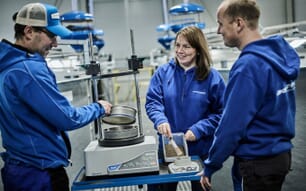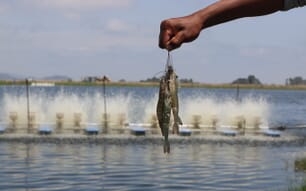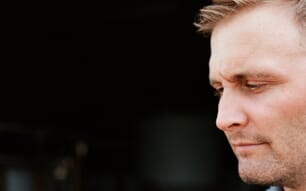Identity
Oncorhynchus kisutch Walbaum, 1792 [Salmonidae]
FAO Names: En - Coho(=Silver)salmon, Fr - Saumon argenté, Es - Salmón plateado

Biological features
Body elongate, becoming deeper with age, spawning males a little hump-backed. Tip of upper jaw reaching well behind eye; snout and lower jaw becoming hooked and teeth enlarged in spawning males. Gillrakers 18-25. Piloric coeca 45-81. Dorsal finrays iii-iv + 8-10, and an adipose fin behind it; base below about middle of dorsal fin. Anal finrays iv-v + 12-14. Caudal fin emarginate. Scales moderate, 120-140 in lateral line. Vertebrae 61-69. Colour silvery, with black spots on upper flanks, base of dorsal fin and upper lobe of caudal fin in adults.
View SIDP Species fact sheet

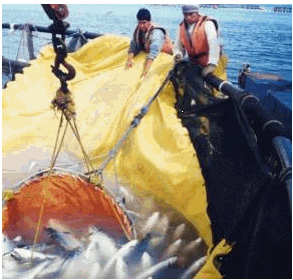
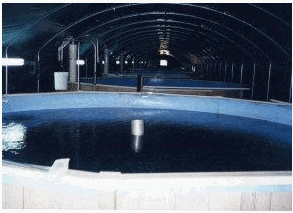
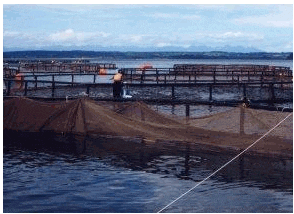
Profile
Historical background
Coho salmon culture was initially undertaken around the year 1900 in Oregon (US) as a means of enhancing commercial fisheries, and later to mitigate the impact of human activities such as dam construction and habitat degradation. In 1969, culture in seacages was initiated in the Puget Sound of Washington State (United States of America) by the National Marine Fisheries Service, followed in 1970 by a public-private commercial scale pilot project. This successful project spurred the development of a commercial farming enterprise that by the mid-1980s produced over 3 000 tonnes/yr of 'pan-size' (0.35 kg) coho salmon in floating cages.
The early successes in North America were soon followed by the development of marine salmon farming in Chile. Coho production increased from about 1 tonne in 1981 to 7 000 tonnes within the decade, and to more than 90 000 tonnes by the end of the twentieth century.
Today minor producers include Japan and Canada, whereas North American production – constrained by local opposition, lack of suitable sea farming sites and falling market prices – has nearly ceased.
The coho salmon stocks presently used in aquaculture were derived from government hatchery programmes in the US and Canada, but most countries now rely on local sources. Until recently, most broodfish were obtained from normal production stocks. Some breeding programmes exist that attempt to improve productive traits by directional selection. One notable example is the Domsea coho salmon broodstock, which has been intensively managed since 1977 with the goal of improving economically important production traits.
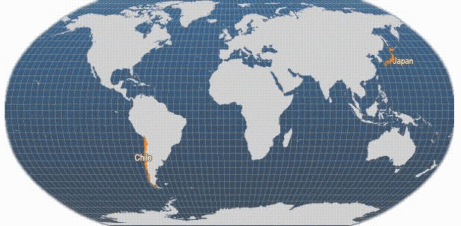
Coho salmon, which are native to the coastal area of the North Pacific Basin, have been introduced into many areas of North America, Asia, Europe and Latin America, although most attempts to establish naturalized populations have been unsuccessful. Self-sustaining stocks have been reported in the Great Lakes of America and in Chile, where they are a major species in a rapidly expanding aquaculture industry.
Endemic populations of coho salmon exist throughout the North Pacific basin. They are found from the northern Japan through Kamchatka, across the Bering Sea to Alaska, and south to California. Incidental migrations of Asian coho salmon have been reported as far south as Chongjin on the east coast of North Korea, and occur as far north as the Anady River (latitude 65°N). In Alaska, the most northern coho salmon population is found above latitude 68°N, in the Kukpuk River, and they have been consistently caught as far south as Monterey Bay.
In the wild, coho salmon usually mature during their third year of life, including 4–6 months in incubation, 15 months rearing in freshwater, and 18 months of ocean residence. Mature fish return to their rivers of origin during late summer and autumn. Spawning occurs between November and January.
Female coho produce 2 000–5 000 eggs, which are deposited, upstream, in gravel nests ('redds'). The length of time required for eggs to incubate in the gravel to hatching, for yolk absorption, and fry emergence is temperature dependent. The total heat requirement for this phase of development is approximately 1 000 degree (°C) days.
After emergence, fry initially aggregate but later become territorial, preferentially occupying slower moving sections of streams. Juvenile coho feed primarily on terrestrial and aquatic insects, crustaceans, and become predatory as yearlings. Before beginning their seaward migration in spring, they undergo a period of metamorphosis called smoltification, during which they become physiologically adapted to seawater. The size of wild smolts ranges from approximately 15–30 g.
In seawater, juvenile coho feed mostly on marine invertebrates, gradually becoming piscivorous as they age. Growth rates as high as 1.1 mm/day during the first six months in the sea, with a daily increase in weight of about 2 per cent, have been reported. Size at maturity averages 3.0–5.5 kg, although larger fish have been observed.
Production
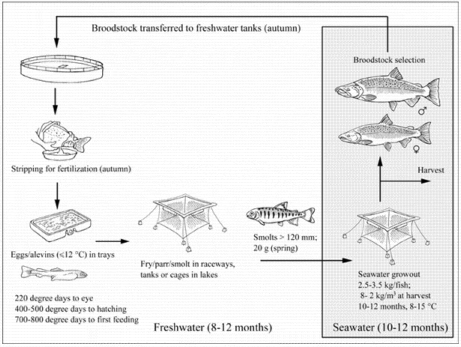
Production systems
Seed supply
Coho salmon are produced entirely in hatcheries.
Broodstock
Maturing adults are obtained from either seafarm production stocks or selected groups specifically managed as broodfish. Because coho salmon mature after one year in the sea, two separate broodstocks – odd year and even year spawners – are required to maintain continuous production. In autumn, maturing broodfish are selected from groups reared at seasites and moved into freshwater tanks where final maturation and spawning takes place.
Hatchery production
Female salmon are ready for spawning when their eggs can be expressed by only slight pressure to the abdomen. Female fish are humanely killed, their eggs removed and fertilized with milt from one or more male fish. After water hardening and disinfection, the eggs are placed in hatchery trays for incubation. At the eyed stage of development, the eggs are 'shocked' by pouring them from one container into another. Unfertilized eggs become opaque and are removed. Egg incubation usually takes place in water less than 12 °C. Hatching takes place in the hatchery trays, where the alevins remain until the yolk sac is completely absorbed and they are ready to accept formulated feeds.
Nursery
The fry are then transferred to tanks or raceways within the hatchery for start feeding. Subsequently, they can be grown to the smolt stage in tanks or raceways, or moved to lake cage systems. Fish are usually maintained in ambient water temperature and natural photoperiod regimens to produce smolts in the spring of the year of hatching, but temperature and photoperiod can be manipulated to induce early smoltification. In either case, the fish must attain a certain 'threshold' size before smoltification can occur. Coho salmon smolts generally weigh 30–80 g when they are transferred to the sea.
Ongrowing techniques
Coho salmon are ready for transfer to seafarms when parr marks (large, vertically oriented bars of pigment in a row along the lateral line of juvenile salmon) are no longer visible and after seawater tolerance tests verify that smoltification is complete. After grading to remove undersized fish, the smolts are placed into specialized transfer tanks and transported by road or sea-going vessel.
Ongrowing at sea takes place in cages consisting of large nets suspended from floating structures anchored to the seabed. The floating cage structure may be either square or circular in shape, and is constructed of high-density polyethylene or steel. Typically, producers use plastic circular cages 25–30 m in diameter or square steel cages (25 m x 25 m), from which nets 16–18 m in depth are suspended. Several cages are usually grouped together to form a 'seafarm' or 'seasite'. Cage systems may also be entirely surrounded by additional nets to protect them from predatory marine mammals.
Seafarm locations are selected on the basis of season water temperature profile, dissolved oxygen content, salinity, depth and current velocity; exposure to storms; presence of harmful algae and diatoms; proximity to other farms; and in compliance with local regulations. Coho salmon tolerate a wide array of oceanic conditions but grow best when temperatures are in the range of 9–15 °C, and water currents are sufficient to disperse wastes and provide a continuous supply of well-oxygenated water. Stocking densities at harvest should not exceed 8–12 kg/m³.
Coho salmon remain in seawater for 10–12 months and are harvested after reaching 2.5–3.5 kg. Best management practices dictate that a seafarm should contain only a single year class of fish. This practice reduces the risk of disease transmission to arriving smolts.
Feed supply
Formulated feeds for coho salmon contain various mixtures of oilseed meals (e.g. cottonseed meal, soybean meal), fish meal and fish oil, and various grains (e.g. wheat, corn), supplemented with essential vitamins and minerals. Small quantities of a naturally-occurring carotenoid called astaxanthin, which is found in the prey of wild salmon and gives them their characteristic pink colour, is also added to the feed mixture.
Feeds are pelleted using a process called extrusion, in which the feed mixture is moistened and cooked with live steam before being forced at high pressure through holes in a 'die' plate. After cooling, the feeds are bagged and distributed to the farms.
Modern feeds for coho salmon typically contain 29–30 per cent lipid and 40–43 per cent protein, which is efficiently converted to flesh, often at food conversion ratios below 1:1. The best results are obtained when the fish are fed using computerized, automated systems equipped with feed-back mechanisms to detect when the fish have finished feeding. This permits the fish to be fed to satiation without overfeeding and consequent feed wastage. Good results can also be obtained by trained personnel using operator-controlled blower systems.
Harvesting techniques
Methods vary but the fish are generally starved for several days before harvesting. Small numbers of fish are crowded to the side of the pen using a sweep net (a net that is long and deep enough to reach across and to the bottom of the pen; when stretched across the pen and dropped to the bottom, the lead line is gradually raised by means of lines attached to the bottom corners, thus crowding a limited number of fish into the purse, from which they can be netted) and either transferred alive to a water-filled well boat and transferred to a processing plant, or slaughtered nearby. Harvesting methods are specifically designed to prevent scale loss and release of stress hormones which have detrimental effects on flesh quality.
Handling and processing
Modern processing plants follow strict sanitation and waste disposal procedures to prevent transmission of fish disease, or contamination of the product with potential human pathogens. Before processing, the fish are generally sedated by asphyxiation in carbon dioxide saturated water and/or immersion in iced water. The fish are then bled by cutting the gill arches and immediately immersing them in iced water. Following this, the fish are gutted, washed, graded, and packed on ice. At this stage, the fish can either be frozen or filleted. Generally, premium quality fish are sold either as fresh salmon or frozen. Lesser quality fish are often filleted, trimmed, de-boned or set aside for smoking.
Production costs
Production costs are dependent on a number of factors, including:
- Farm production capacity.
- Feed cost and conversion ratio.
- Disease status and mortality.
- Smolt cost (in Chile, FOB, 60–80 g are USD 0.45–0.55/smolt).
- Location and associated logistical costs.
- Processing method and product type.
In Chile, production costs range from USD 1.40–1.70/kg live weight, excluding harvest, transport, and processing, assuming that mortality is distributed across the entire production cycle and does not exceed 15 per cent (cumulative) and that a feed conversion ratio of 1.15:1 is achieved.
Diseases and control measures
Commonly found diseases are shown in the following table.
| DISEASE | AGENT | TYPE | SYNDROME | MEASURES |
|---|---|---|---|---|
| Bacterial Kidney Disease (BKD) | Renibacterium salmoninarum | Bacterium | Whitish lesions in the spleen & kidney; bleeding from kidney & liver | Statutory controls; biosecurity; broodstock screening; vaccination |
| Enteric redmouth Disease (ERM) | Yersinia ruckeri | Bacterium | Septicemia; reddened mouth | Antibiotics; vaccination in freshwater |
| Furunculosis | Aeromonas salmonicida | Bacterium | Reduced appetite; haemorrhaging at base of fins; fluid in body cavity; enlarged spleen; intestine engorged with blood; focal lesions in muscle | Antibiotics; vaccination |
| Infectious Salmon Anaemia (ISA) | Orthomyxovirus | Virus | Lethargy; reduced appetite; gasping at water surface; pale gills & heart; fluid in body cavity; dark liver; haemorrhages in internal organs | No treatment; statutory controls; biosecurity; bloodwater disinfection |
| Kudoa | Kudoa thyrsites | Myxosporidium | White cysts in muscle; soft flesh texture | No treatment |
| Salmon Rickettsial Disease (SRS) | Piscirickettsia salmonis | Bacterium (rickettsia) | Dark coloration; lethargy; anorexia; erratic swimming; pale gills; fluid in body cavity; swollen kidney & spleen | Antibiotics |
| Sea lice | Lopeoptherius salmonis; Caligus elongatus | Ectoparasites | Reduced growth; scale loss; haemorrhaging of eyes & fins | Paraciticides: bath Azamethiphos, Cypermethrin, hydrogen peroxide; in feed Emamectin, telflubenzuron |
| Vibriosis | Vibrio anguillarum; Vibrio ordali | Bacteria | Reduced appetite; severe anaemia; swollen spleen & soft kidney; focal muscle lesions | Antibiotics; vaccination |
Statistics
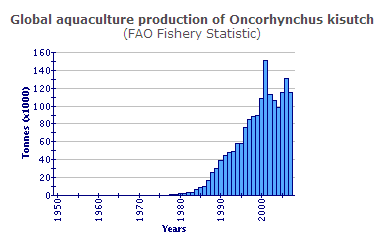
Coho salmon have been farmed in marine environments for more than 40 years, but total production remained below 1 000 tonnes annually until about 1980, when cage farms were established in Chile. Japanese and Chilean production increased rapidly until 1994, when their combined production was 57 300 tonnes (nearly 98 per cent of the global total). Japanese production subsequently stabilized at 8 000–13 000 tonnes/yr whereas production in Chile increased dramatically, peaking at nearly 137 000 tonnes (round weight) in 2001. However, Chilean production of coho salmon has declined considerably since then, in favour of rainbow trout and Atlantic salmon. Despite this, Chile remains the primary producer, with about 89 per cent of the total global production of 101 000 tonnes in 2004. The two other producing countries in 2004 are Japan and Canada.
Market and trade
The principal market for farmed coho salmon is Japan, where Chilean coho account for more than half of the frozen salmon imports. Other countries, especially the United States of America, import lesser quantities, although additional marketing opportunities for value added products have been identified. Processors offer many product forms, including: fresh (headed and gutted (H&G); with or without skin; de-boned fillets); frozen (H&G; with or without skin; de-boned fillets and portions; steaks); and smoked. Portions and fillets can be vacuum packed, which increases shelf life.
Status and trends
The status and trends observed are as follows:
- Global production of coho salmon peaked at more than 150 000 tonnes in 2001, resulting in a precipitous drop in ex-farm prices due to oversupply. By 2004, worldwide production of coho salmon was approximately 101 000 tonnes. The diminished supply is reflected in price increases for Chilean coho in Japan, which reached a five-year high in 2005.
- The major markets for farmed coho salmon are Japan and the United States of America. Coho salmon represent over half of the frozen salmon imported by Japan.
- The major product sold in Japan remains frozen H&G, but other product forms are increasingly available to supply the value added market. In the US and other countries, these products compete directly with products derived from farmed Atlantic salmon.
- Research currently focuses on stock improvement, feed quality, and disease prevention and control – all factors that directly impact production costs and profit margin.
Main issues
Salmon farming in general is controversial in many parts of the world, and its potential impacts on the environment and human health have been extensively studied. Among the concerns are:
- Nutrient loading from organic wastes (feed and faeces) in the water column and their deposition on the benthos beneath and adjacent to salmon farms.
- Accumulation of heavy metals, in particular zinc and copper, in the water and sediments near farms.
- Impacts of escaped non-indigenous salmonids on local ecosystems, including genetic interactions, disease transmission, and ecological interactions.
- Utilisation of fish meal and fish oil in feeds for farmed salmon.
- Contamination of farmed salmon with chemicals and chemotherapeutants used in the farming operations.
Responsible aquaculture practices
The FAO Code of Conduct for Responsible Fisheries and its subsidiary documents advocate safe and high quality fishery products and called for the global aquaculture industry to make safe and effective use of feeds, feed additives, chemotherapeutants, and other chemicals, and to promote the use of aquaculture practices and methods which reduce the hazards. Countries producing salmon are also governed by regulations protecting the environment and the consumer.
May 2010

